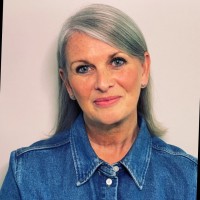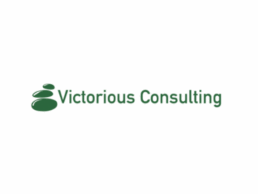Navigating the currents of transformation: Vicky’s journey
Navigating the currents of transformation: Vicky’s journey
In Amstelveen, just outside Amsterdam in the Netherlands, Vicky Hampson, a driven Commercial leader with a particular passion for innovative Cx shares experiences from a significant transformation program within a Global organization in the EdTech / Education Management space. Her narrative illustrates the profound impact of championing an experimentation mindset to drive innovation in customer excellence, leading to valuable insights and progress within the organization, even when navigating resistance to this shift.
Who is Vicky?
Vicky Hampson is currently the founder of Victorious Consulting, a consultancy dedicated to enabling individuals, teams and their manager leaders and organisation they operate within to perform, grow and thrive - consistently. Based just outside Amsterdam, Vicky’s insights shared today stem from her prior role within a substantial educational management organization.


Understanding the brand: Victorious Consulting
The company where Vicky spearheaded her Cx efforts was an extensive organization operating in the EdTech / Education Management space. With a global presence and driven by continuous innovation the organization spanned a broad spectrum of learners at all ages and stages, and their educators who were deeply committed to transforming learning for impact.
The challenge: broadening customer focus
For this specific scenario the key challenge Vicky faced was the company’s strong and long-standing focus on being learner focused. A noble and righteous focus as the driver of meaningful impact, and one strongly supported by executive leadership, key stakeholders, and the learning community. While a noble strategy, it did present challenges and blockers in the way it shifted focus away from commercial customers and partners. While the organization was known for its credible reputation with global customers and partners, the general sentiment was a prioritization of the learner. This made it challenging to build support for an initiative that aimed to bring about equal attention to business customers. The challenge wasn’t that the idea was rejected, it just wasn’t seen as a priority at the time.
The solution: pilot drives validation
- Establishing a network of allies: She connected with numerous key individuals across the organization who recognized the strategic importance of a customer-centric approach. These individuals, representing various business functions and regions, came together into a small steering group dedicated to building a case for this viewpoint and fostering a shared understanding that it wasn’t necessary for the focus to be an either or.
- Developing a strategic charter: This group collaboratively developed a charter that articulated their vision and impacts to be gained by elevating the customer to a level of importance comparable to learners. The vision clearly defined the involved parties, primary and secondary objectives, key performance indicators, project timelines, and the wider network of colleagues whose expertise would be essential to the initiative. The initial strategy involved a phased implementation, commencing with targeted pilot markets.
- Implementing a pilot program in a key market: Prior to securing widespread organizational endorsement, Vicky and her team successfully piloted a more customer-focused approaches within a specific market, as part of sale excellence goals. This pilot encompassed several key activities:
- Assessing existing capabilities: Evaluating the current skill levels of the sales teams against the evolving demands of the transformed business.
- Implementing capability enhancement programs: Delivering comprehensive training programs designed to reframe the team’s understanding of customer-facing roles and the critical importance of exceptional experiences. This included practical exercises such as journey mapping, to identify and overcome customer pain points and also to and reimagine overall service and solution provision.
- Gathering customer feedback: Implementing targeted surveys with insight driven questions aimed at a specific segment of customers to gain valuable and actionable insights.
- Addressing operational inefficiencies: Leveraging new insights to streamline decision-making processes and optimize the existing product portfolio,
- Undertaking commercial analysis: Examining the product range to identify opportunities for significant cost reductions, thereby strengthening the business case for their approach.
The clear success in this pilot market, demonstrated by notable efficiencies to be gained, along with additional capacity and increased revenue. Importantly it also provided validation of the value of this customer-centric approach. The strong existing relationships with educators and partners in this market, who were already aligned with a focus on both the customer and the learner, were key to the positive results. Building on these learnings and successes, a clear action plan was then created.
Lessons learned & advice for CX professionals
- In line with her strong belief in an learning and iterating from an experimentation mindset, Vicky shared several important lessons learned from this experience, providing helpful advice for other Commercial Leaders and CX professionals:
- Understand the prevailing priorities: Recognize the existing strategic direction and tailor your approach to complement, rather than contradict, it.
- Speak the language of your stakeholders: Craft your value proposition from the perspective of those you are trying to influence, and what it critically important to them both rationally and emotionally. Understand what is close to their hearts as well as share prices.
- Don’t underestimate the “why”: Be prepared to answer the fundamental “why” questions from stakeholders: In this instance Why Change?
- The power of validation: Starting small and demonstrating tangible results, as they did in their pilot market, can build credibility and support for broader initiatives.
- The importance of stakeholder engagement: Actively seek to understand your stakeholders’ goals and align your efforts with them. Map your ecosystem, understand what matters to each player in order to shift mindsets to full commitment and approval.
- Conduct a “pre-mortem”: Before launching an initiative, proactively consider what could go possibly wrong and address potential objections in advance.
- Step back and gain perspective: Regularly take a broader view of the CX landscape, innovations that are driving transformation and impact and seek diverse opinions, even from those outside your immediate field.
- Focus on delivering great experiences: Make the case for measurable impact and outcomes. Frame your goals around creating innovative, seamless high-value experiences for customers and partners.
- Embrace continuous learning: Stay curious, test your assumptions, and validate your approaches using diverse perspectives.
Final thoughts
Vicky Hampson’s journey illustrates the complexities of championing a customer-centric approach within a large organization undergoing significant transformation. Her experience underscores the importance of understanding stakeholder motivations, crafting compelling value propositions, and strategically leveraging pilot programs and data-informed insights. While organization-wide adoption was not immediately achieved, the valuable lessons gained played a crucial role in shaping her leadership philosophy and approach to organizational transformation and change. Her story serves as a reminder for CX professionals to be exceptional casec makers, dedicated advocates and strategic thinkers in their pursuit of delivering exceptional innovative customer and partner experiences.
Scaling CX: Christian Osmundsen’s evolution from customer support to CX strategy at Deliverect
Scaling CX: Christian Osmundsen’s evolution from customer support to CX strategy at Deliverect
From the buzzing heart of Amsterdam to the global food-tech stage, Christian Osmundsen has been quietly leading a transformation. As Global Head of Customer Experience at Deliverect—a middleware platform powering the digital ordering infrastructure for restaurants—Christian has grown a team, expanded a role, and redefined what customer experience means in a fast-scaling SaaS company.
Who is Christian Osmundsen?
Christian’s career path is anything but conventional. From flight attendant to interpreter, and later a pivotal role at Netflix, he’s always found himself close to customers. His CX career formally began in 2017 at Netflix’s Amsterdam office, where he helped scale customer support. Now, at Deliverect, he leads a global team of around 50 people spanning from Australia and Dubai to Madrid, Mexico and Toronto.


Understanding the brand: Deliverect
Deliverect provides the invisible digital backbone of restaurant operations—integrating order platforms, streamlining kitchen workflows, and reducing operational chaos. The company operates worldwide and has scaled rapidly.
Christian says. “We work in the background, making digital order management and the digital evolution for the restaurant business easier.” With over 500 employees globally, Deliverect is rapidly growing—bringing both opportunity and complexity.
The challenge: from firefighting to future-building
When he joined, Christian’s role focused entirely on support. The business was scaling fast, and the priority was building a team that could keep up. But over time, it became clear that a broader, more strategic view of the customer journey was needed. That shift—from operational support to holistic experience—didn’t come without any hurdles.
One of the biggest challenges was prioritization. In a high-growth environment, teams were stretched thin, and while customer experience was valued in theory, gaining time and attention in practice was tough. “I struggle with getting commitment even from leaders in my organization—not because they were not passionate, but there are so many other fires that need your attention right now.”
On top of that, regional differences in expectations made it difficult to design and scale a consistent experience globally. “The cultural expectations and traditions in each region are very different—not only for how they would like to reach out to a support team, but what they expect from us as a company.”
The solution: building CX into the DNA
Christian gradually transformed the support-focused function into a more strategic one. At the start of this transformation was a newly developed CX strategy, focused on four emotional outcomes Deliverect wants customers to feel:
empowered, thriving, supported, and trusting.
These outcomes were validated through customer journey mapping, followed by in-depth interviews with customers from key segments. The team used this process to identify gaps between intention and perception—for example, discovering that customers felt less supported during post-sales moments.
Several initiatives helped embed CX more deeply into the company:
- A company-wide refresh of vision, mission, and values, including a clear customer-facing value.
- CX masterclasses to strengthen internal skills and understanding.
- A flexible governance model using topic-based subcommittees, giving stakeholders a focused way to collaborate on current challenges.
- A clear follow-up process for customer research, with action plans owned by senior leaders and tracked over 3–4 months.
Christian’s team also uses AI to tag support conversations and analyze sentiment—both rated and unrated—to surface product issues and inform priorities. “We get a good report on what types of our product create the most support tickets. Then it gets interesting to deep dive into that.”
To support product development, feedback loops have been established between CX, product managers, and engineering. “We have to balance what our customers really ask for with the vision of where we want to go as a company.”
Lessons learned & advice for CX professionals
One of Christian’s key lessons is the importance of visibility. Communicating CX goals once isn’t enough—you need to repeat them, reinforce them, and be present. “It takes constant communication,” he says. “But it pays off.”
He also emphasizes the value of treating CX as a discipline. Although metrics like NPS and CSAT are tracked, they aren’t goals in themselves—they’re conversation starters. “We don’t steer our company on NPS... but we measure it exactly the same way all the time. If our NPS changes, it must be for a reason.”
What helps? Closing the loop. “When we have a bad month on NPS, we look into the detractors. We analyze the communication, and our account managers reach out to the accounts they own to better understand what happened.”
Final thoughts
Christian is proud of how the team scaled support operations while laying a strategic foundation for CX. In the early days, complaints were high and expectations tough to manage. “The first two months that I joined this company, we received many complaints,” he recalls. “We are at a much better place now.”
The numbers reflect the shift:
“We had customer satisfaction trending at 78–79% and now we’re trending at almost 90. Our NPS was sometimes down to zero—now we’re at 30 to 35.”
Looking ahead, he sees great potential in AI—but only if applied responsibly. “AI is also less intelligent when it comes to sharing sensitive data. So a lot of guardrails—human guardrails—need to be in place in this evolution.”
His advice for others?
“Dare to take some calculated risks. Use technology in your customer-facing experience… combined with a human touch, it’s just amazing what you can do.”

